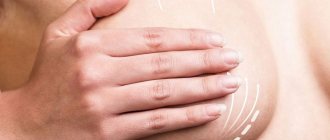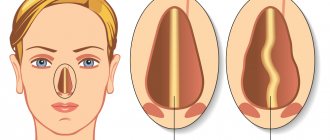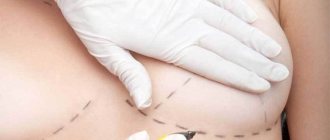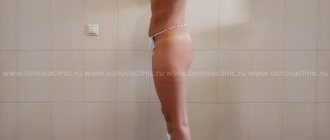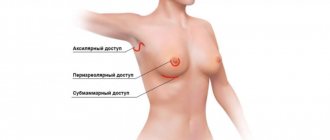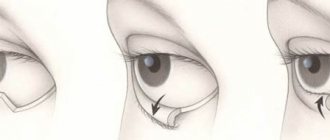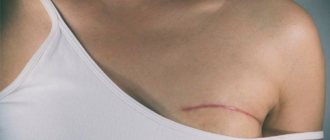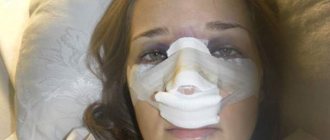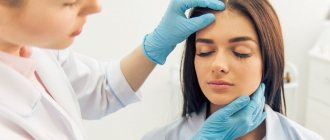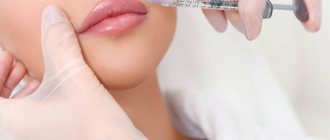Make an appointment
Published: 03/09/2020
Reading time: 4.5 min.
Number of reads: 13719
Rating:
An operation to change the size of the breast or correct its shape is not one of the simplest. Complete recovery of the body usually takes about a year. Following doctors' recommendations for introducing restrictions after mammoplasty is an important condition for obtaining a positive result.
The speed of adaptation in the postoperative period is influenced by the following factors:
- how extensive the surgery was;
- quality of preliminary preparation (nutrition, giving up bad habits);
- age (a younger body adapts to the situation faster);
- ability for tissue regeneration;
- the right psychological attitude.
In this regard, the speed of recovery may vary, but there are still general recommendations.
What not to do in the first week after mammoplasty surgery
- Lifting weights, even 3 kg, is already heavy.
- Play sports, have active sex and do physical work.
- Drink alcoholic beverages and smoke.
- Drive a car and wear a seat belt.
- Violate hygiene.
- Ignore instructions to wear compression garments 24/7.
Without following simple recommendations, you risk complications: inflammation, wound infections, fluid around the implants, mixing of implants, etc.
More about post-operative care
Taking medications
After mammoplasty, the following groups of medications are prescribed: painkillers, antivirals, antibiotics, antiseptics and drugs that accelerate skin rehabilitation - Dermatix, Contractubex.
Massage
Often after mammoplasty, patients are recommended to undergo massage for rehabilitation. It accelerates the removal of swelling and prevents fluid stagnation. Massage is prescribed three weeks or a month after surgery.
Care for scars and scars
When breast augmentation, correction or breast lift is performed, rehabilitation lasts differently, but you need to take care of the stitches. There are three types of stitches: cosmetic, stapled and invisible. One of the main ways to care for stitches is to wear compression garments. It is also recommended to fasten the edges of the wound with a Meliform plaster and treat the seams with an antiseptic.
Skin care
Masks and creams maintain elasticity; they should be used, but do not smear cream on the seams. If the restoration of the sutures goes according to plan, after a month you can do alginate masks, wraps and procedures.
After plastic surgery, scars and scars remain, the size of which depends on the type of plastic surgery and the location of the incision. Formed scars are smeared with gels after the stitches have healed. If a noticeable scar remains, cosmetic and surgical procedures are used.
This is general information about how recovery after mammoplasty goes. If you are interested in rehabilitation after mammoplasty, reviews will tell you a lot about your mood and feelings. Rehabilitation after mammoplasty under the muscle or in another way takes place in different ways, but remember - as a result, you get a beautiful shape and the ideal breast size for you.
The information on the site was personally verified by plastic surgeon Maxim Aleksandrovich Osin; if you have any additional questions, call the phone number listed on the site.
Why after mammoplasty you can’t play sports or lift weights?
During the first week, the muscles hurt even at rest. If you want to avoid excessive pain, avoid putting stress on your shoulder girdle in the first 2 weeks. If you want ideally shaped breasts, give up for 4-5 weeks. If you don’t want to have any problems, follow the rules of what not to do after mammoplasty breast surgery.
When contracting, the pectoral muscle pulls the implant along with it. And if you often raise your arms and load your chest in the first month, the implant will rise above the planned level. Moreover, the level of placement of the implants will rise unevenly - the right one for right-handers will be slightly higher than the left.
Don’t forget that regular walking or moderate exercise helps the body recover faster. Household chores can be done as soon as the pain subsides. And you will return to sports in 4-5 weeks, and the load in the gym should be increased gradually.
Diving, martial arts, spinning around a pole and other traumatic sports will become available 3-4 months after surgery, not earlier.
Restrictions
After each consultation, the doctor, depending on the patient’s condition, gives appropriate recommendations.
A week after surgery.
This is the most important time to restore the body. Painful sensations may accompany the patient for 5 to 7 days.
- To reduce the load, it is recommended to rest only in a half-sitting position.
- In the first 2–3 days, postoperative sutures should not have contact with water. Then you can take a shower with the doctor’s permission, the water should be warm (not hot), and the stream should be diffused.
- Physical activity must be reduced to a minimum.
- Immediately after mammoplasty, compression garments are put on to stabilize the breasts and improve blood circulation. During the first month, the underwear is not removed, and you need to check that it fits correctly (the strip above the chest should be strictly parallel to the floor).
To avoid complications, it is better to entrust household chores and care for small children to loved ones.
The first month after mammoplasty.
During this period, tissue healing occurs.
- For two weeks, you should not raise your arms above chest level to prevent deformation of the sutures and displacement of the implants.
- You cannot bend down or make sudden movements with your hands.
- To avoid displacement of the implants and pressure on the chest, you should sleep only on your back.
- The load on the shoulder girdle area is eliminated; the best physical activity is walking.
- It is prohibited to lift weights exceeding two kilograms.
- It is also undesirable to drive during this period: seat belts can put pressure on the chest.
- You can do some simple homework.
Third month of rehabilitation.
The period of recovery of the body.
- You should not give your body significant physical activity for 3 months, in some cases – up to six months. You can try swimming after two months after plastic surgery.
- For the first three months, you should avoid visiting the sauna or bathhouse: exposure to high temperatures leads to strain on the cardiovascular system. Sweating increases and the body becomes dehydrated.
- It is not worth planning a vacation to warm countries during this period: exposure of the sun's rays to your chest is unacceptable. Exposure to ultraviolet radiation can lead to hardening of scars and deformation of implants. It is advisable to refrain from topless sunbathing throughout the year. For the same reason, visiting the solarium is excluded.
- During the second month, you should continue to wear compression garments during the day, and you can take a break from them at night. This is a very important point, since refusal to wear special underwear can lead to negative consequences: displacement of implants, changes in breast shape, asymmetry.
From 3 months to a year.
Gradual return to normal lifestyle. If the recovery period is normal, during a routine examination, the doctor may remove some restrictions.
- Compression underwear can be replaced with elastic bras without hard wires, which provide good support to the breasts without squeezing them.
- Gradually and carefully, you can take your usual sleeping position - on your side or stomach.
- After six months of normal rehabilitation, you can visit a Turkish bath (consultation with a plastic surgeon is required).
- The possibilities for playing sports are expanding, but loading the pectoral muscle with strength exercises is still not recommended. Yoga, stretching, and therapeutic exercises can be helpful.
Why do many people say that you can’t sunbathe after mammoplasty?
Sunburn scars can lead to hyperpigmentation. Sun exposure significantly slows down the healing process. You can sunbathe, but post-operative stitches should be covered from the sun.
You will have to abstain from baths and saunas for some time. Warming up provokes various infections. A month after the operation, visiting the sauna is allowed, but reason and logic must be present in all actions. Allowed does not mean sitting in the steam room for hours. Excessively overloading your body is something that definitely cannot be done after any operation, not just mammoplasty.
- Cardiac rehabilitation
- Neurorehabilitation
- Oncological rehabilitation
- Rehabilitation after joint replacement
- Rehabilitation after operations, injuries, diseases of the musculoskeletal system
- Rehabilitation after COVID-19
- Department of Physical Rehabilitation
- Physiotherapeutic department with hydrokinesitherapy room
- Cabinet of reproductive technologies
- Vertebrology and manual therapy office
Surgical removal of the mammary gland for cancer is a complex physical and psychological test for the female body. After the operation, various complications may develop, one of them is postmastectomy syndrome, which includes:
- postmastectomy defect (including cosmetic);
- cicatricial changes in the axillary area, causing the development of contracture (persistent limitation of movement) of the shoulder;
- brachioplexitis and/or neuropathy of the brachial nerve;
- swelling of the upper limb (postmastectomy edema, lymphedema);
- psycho-emotional abnormalities in the form of worries, anxiety, mental exhaustion, and severe depression (in 25% of women), which leads to a significant deterioration in the quality of life.
To prevent the development of a number of these complications, rehabilitation treatment should be comprehensive, begin early and include physical, physiotherapeutic, cosmetic and psychological factors.
Our Center successfully applies comprehensive rehabilitation programs for patients both in the early postoperative period and in the longer term.
What do we offer:
- Therapeutic gymnastics classes
. After a mastectomy, therapeutic exercises can begin as early as 2-3 days. In the first stages, gentle exercises with low intensity and low amplitude are selected. Various types of breathing exercises are used. Rehabilitation treatment is aimed at speedy healing of the postoperative suture, reducing postoperative swelling, reducing the severity of pain, and improving lymph flow. In a more distant period, after the formation of a scar, the intensity of exercise increases, the amplitude of movements increases to full to prevent the formation of persistent restriction of movement in the shoulder joint from the side of the operation. - Hardware mechanotherapy.
The technique is used when there is a persistent limitation in the range of motion in the shoulder joint on the operated side. With the help of the device, scar tissue that limits movement will gradually stretch, passively, and the full range of movement in the shoulder joint will be restored. - Massage in an electrostatic field using a drainage technique.
Hivamat or Elgos devices are used, the action of which is based on deep resonant vibration. When selecting the correct frequencies and range of exposure, there is a drainage effect on the tissue, which improves blood and lymph circulation and reduces the severity of edema. - Magnetotherapy.
Under the influence of a constant or alternating magnetic field, on the side of the operation, microcirculation of fluids in tissues improves, the process of restoration and healing is activated. In addition, such procedures have an anti-inflammatory effect and reduce swelling. - Lymphatic drainage.
This modern technique is used to reduce postoperative swelling caused by stagnation of lymph in the tissues adjacent to the surgical area. Hardware stimulation of muscle tissue ensures normalization of lymphatic drainage. This rehabilitation method is successfully used in the postoperative recovery of various categories of patients, including for the rehabilitation of women who have undergone breast removal surgery. - Intermittent pneumocompression.
This technique is also aimed at reducing postoperative swelling and preventing the development of lymphedema (elephantiasis) or lymphatic deficiency. Using a special sleeve, air is pumped into the operation area. The exposure is carried out in a specially selected mode (pressure level, exposure time, pneumocompression rate). - Psychological support.
A special place in the rehabilitation of patients who have undergone breast surgery is occupied by work with psychologists at our Center. Inevitably, after surgery, patients have questions related not to the disease itself, but to emotional problems, the issue of maintaining female identity, attractive appearance (especially in the case of upcoming chemotherapy), and building relationships with colleagues and loved ones. Psychological Support Service specialists help women overcome doubts and fears.
Prevention of postmastectomy syndrome:
- Never ignore the appearance of even minor swelling of the arm, hand, fingers or chest (consult your oncologist immediately).
- should not
to inject or draw blood . - Measure blood pressure on the arm opposite to surgery.
- Avoid repeated vigorous, opposing hand movements from the side of the operation (shoveling snow, clearing leaves, pushing or pulling objects, etc.).
- Avoid lifting heavy objects with your hand from the side of the operation (no more than 3 kg). Never carry heavy bags over your shoulder or in your hand on the side of surgery.
- Avoid strong temperature fluctuations when swimming and washing dishes; visiting a sauna or taking hot baths is also not recommended. Always protect your hand from direct sunlight.
- Try to avoid any injury to the arm on the side of surgery (blows, cuts, sun or other burns, sports injuries, insect bites, scratches). Watch for signs of infection. Wear gloves when doing housework, gardening, or other work that may cause even minimal damage.
- Avoid cutting cuticles when doing manicures.
- Use an electric razor to remove hair in the armpit area.
- Attention: if a rash, itching, redness of the skin, pain, or fever appears, immediately consult an oncologist.
- Perform a regular set of moderate-intensity exercises for the upper limbs. Exercises should not cause discomfort or pain in the arm from the operation after completion.
- Trying to maintain your normal weight. The diet should be well balanced.
- Do not smoke or drink alcoholic beverages.
Why you can’t have sex after mammoplasty
For most women, the desire for intimacy returns 2 weeks after surgery; before that, it hurts to raise your arms, your breasts are swollen and painful. After 2 weeks, sex is possible only in the classic missionary position or with the partner on top in an upright position. There should be no sudden movements or stress on the shoulder girdle.
Should I mention what a partner should not do after his wife’s mammoplasty? Restrictions include: touching breasts, kneading them, lying on top of your partner, etc.
If you neglect the instructions, the following are possible:
- asymmetry,
- prolapse of the implant,
- stretch marks,
- sagging,
- formation of additional hematomas,
- other unpleasant consequences.
Intense and rough sex can be had only after 2-3 months.
About the operation
The most severe restrictions after mammoplasty usually occur in the first months of rehabilitation. During this time, regeneration of injured tissue occurs, implants take root, scars heal, and hormonal levels are leveled out. After the operation, the patient is under the supervision of medical personnel for two hours, then transferred to the ward. You can't drink for three hours, but you can eat after five. Discharged, as a rule, a day or two after plastic surgery
During the year, the plastic surgeon must conduct consultations after:
- 1 week;
- 3 weeks;
- 3 months;
- 1 year (ultrasound examination is performed).
